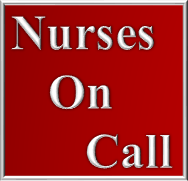In today’s diverse world, language barriers can pose significant challenges in healthcare settings. Effective communication between healthcare providers and patients is essential for accurate diagnoses, proper treatment, and overall patient satisfaction. Addressing these language barriers is crucial to ensure that every individual receives the highest quality of care, regardless of their language proficiency. Nurses On Call is a nurse staffing agency with over 25 years of experience, offering a solution to this issue by providing highly skilled bilingual nurses who can bridge the gap and facilitate effective communication between patients and healthcare providers. With their expertise and dedication, Nurses On Call strives to create a more inclusive and accessible healthcare environment for all.
Importance of Addressing Language Barriers
In today’s diverse society, addressing language barriers in healthcare settings has become increasingly important. Effective communication between healthcare providers and patients is vital for accurate diagnoses, appropriate treatment plans, and overall patient satisfaction. Language barriers can significantly hinder this communication process, leading to adverse effects on patient care and outcomes. Therefore, it is essential for healthcare organizations to prioritize the implementation of language access services to overcome these barriers and ensure equitable care for all patients.
Effects of Language Barriers on Healthcare
Language barriers can have profound effects on healthcare delivery and patient outcomes. When healthcare providers and patients cannot effectively communicate due to language differences, it can lead to misunderstandings, confusion, and potential medical errors. Patients may struggle to accurately convey their symptoms, medical history, or understand instructions provided by healthcare professionals. This lack of comprehension can hinder accurate diagnoses, delay appropriate treatment, and even result in preventable adverse events. Moreover, language barriers can contribute to feelings of frustration, embarrassment, and anxiety for both patients and providers, further compromising the quality of care.
Legal and Ethical Obligations
Addressing language barriers in healthcare is not just a matter of good practice; it is also a legal and ethical obligation. In the United States, federal laws such as Title VI of the Civil Rights Act of 1964 and the Affordable Care Act mandate that healthcare organizations receiving federal funding must provide language access services to limited English proficient (LEP) individuals. Failure to comply with these laws can result in fines, loss of funding, and reputational damage. Additionally, healthcare providers have an ethical duty to provide culturally and linguistically appropriate care to ensure equal access and equal outcomes for all patients, regardless of their language proficiency.
Available Language Access Services
Healthcare organizations have multiple options for addressing language barriers and providing effective communication with LEP patients. These language access services range from professional medical interpreters to technology-based solutions. It is crucial for healthcare providers to evaluate their specific needs and resources to determine which services are most suitable for their practice. Here are some of the most common language access services available:
1. Professional Medical Interpreters
Professional medical interpreters are highly trained individuals who specialize in facilitating effective communication between healthcare providers and LEP patients. They possess fluency in both the patient’s language and English, ensuring accurate and confidential interpretation. Professional interpreters can be either on-site or accessed remotely through teleconferencing technology. Their expertise in medical terminology and cultural nuances significantly enhances the quality of communication and the overall patient experience.
2. Telephone Interpretation Services
Telephone interpretation services are a convenient and cost-effective option for healthcare organizations. These services allow healthcare providers to access professional interpreters over the phone at any time, eliminating the need for in-person interpretation services. This flexibility enables efficient communication in urgent situations, where immediate language assistance is required. Telephone interpretation services are widely accessible and can be especially beneficial in rural areas or smaller healthcare facilities with limited language needs.
3. Video Remote Interpretation
Video Remote Interpretation (VRI) combines the benefits of both in-person interpretation and telephone interpretation. It utilizes video conferencing technology to connect healthcare providers with professional interpreters in real-time, allowing for visual cues and increased engagement. VRI is particularly useful for complex or sensitive medical consultations, where visual communication and body language play a crucial role. This service ensures a more personalized interaction while maintaining the convenience of remote interpretation.
4. Bilingual Staff Members
Having bilingual staff members who can communicate with LEP patients in their native language can be a valuable asset for healthcare organizations. Bilingual staff can play a vital role in bridging the language gap, providing basic interpretation and facilitating effective communication. While they may not have the same level of expertise as professional interpreters, they can still enhance patient-provider communication and help create a more inclusive and welcoming healthcare environment.
5. Language Line Services
Language Line Services offer an extensive network of over-the-phone interpreters in various languages, ready to assist healthcare providers at any time. These services typically operate through a dedicated phone line, where healthcare professionals can connect with interpreters who specialize in medical terminology. Language Line Services are particularly beneficial for larger healthcare organizations with diverse patient populations or those in need of language assistance across multiple locations.
Patient Education on Language Services
To ensure successful implementation and utilization of language access services, it is crucial for healthcare organizations to educate their patients about these available resources. Patient education on language services can be achieved through various means such as brochures, posters, or educational videos in multiple languages. Providing information on how to access interpretation services and the importance of utilizing them can empower patients to actively communicate their needs and preferences. In addition, healthcare providers should proactively inquire about language preferences during intake and registration processes to ensure timely language assistance.
In conclusion, addressing language barriers in healthcare settings is paramount to providing equitable, patient-centered care. Healthcare organizations have legal and ethical obligations to provide language access services to limited English proficient individuals. By employing professional medical interpreters, utilizing telephone interpretation and video remote interpretation services, leveraging bilingual staff members, and partnering with language line services, healthcare providers can effectively communicate with LEP patients and improve overall healthcare outcomes. Patient education plays a vital role in maximizing the utilization of language services, empowering patients to actively engage in their care and fostering a culturally inclusive healthcare environment.





